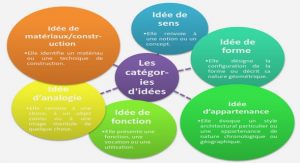Extract Texture Features
Problem Statement
Finding watermark embedding parameters to satisfy the trade-off between watermark quality and robustness is considered an optimization problem. The dimension of this problem is dependent on the resolution of the cover image. For high-resolution face images, the dimension of the optimization problem is high and thus increases its complexity. All blocks of the face image have to be represented in the search space and the candidate solutions to find optimal embedding parameters for all blocks. EC methods suffer from premature convergence for such large search space. Handling a stream of grayscale high-resolution face images results in a stream of complex optimization problems with large search space. This stream of complex optimization problems is very expensive computationally even with using parallel fitness evaluations using Graphical Processing Units (GPU). Normally access control applications have large streams of highresolution facial images captures, and thus using IW methods for such application is not feasible unless the computational complexity can be afforded by modest resources. To tackle this stream of complex optimization problems, the strategy is to divide this into two main challenges. The first challenge is the stream of recurrent optimization problems, and the second challenge is to handle a single optimization problem with high dimension search space.
Watermarking Metrics
Digital watermarking system can be characterized using three main aspects: watermark quality, watermark robustness, and watermark capacity. Watermark quality measures the distortion resulting from watermark embedding, there are limits defined in literature (Voloshynovskiy etal.,1999), where the human vision cannot recognize the distortion resulting from the embedding.Watermark robustness measures the resistance to different manipulations and processing on the watermarked image, this is measured by the correlation between the extracted watermark after the manipulations and the original watermark. Watermark capacity measures the number of embedded bits per block given thresholds for watermark quality and/or watermark robustness.
Watermark Robustness
Voloshynovskiy et al (Voloshynovskiy et al., 2001) have proposed a classification for different types of watermark attacks into four categories of attacks: removal attacks, geometric attacks,cryptographic attacks, and protocol attacks. Figure 1.1 shows the classification for different types of attacks. Removal attacks aim at the complete removal of the watermark information from the watermarked data without cracking the security of the watermarking algorithm, in other words without the key used for watermark embedding. Geometric attacks do not actually remove the embedded watermark itself, but intend to distort the watermark detector synchronization with the embedded information. The detector could recover the embedded watermark information when perfect synchronization is regained. Cryptographic attacks aim at cracking the security methods in watermarking schemes and thus finding a way to remove the embedded watermark information or to embed misleading watermarks. Protocol attacks aim at attacking the entire concept of the watermarking application. One type of protocol attack is based on the concept of invertible watermarks. The idea behind inversion is that the attacker subtracts his own watermark from the watermarked data and claims to be the owner of the watermarked data.
BLOCKWISE COEVOLUTIONARY GENETIC ALGORITHM (BCGA)
In biometric systems, reference facial images captured during enrollment are commonly secured using watermarking, where invisible watermark bits are embedded into these images.Evolutionary Computation (EC) is widely used to optimize embedding parameters in intelligent watermarking (IW) systems. Traditional IW methods represent all blocks of a cover image as candidate embedding solutions of EC algorithms, and suffer from premature convergence when dealing with high-resolution grayscale facial images. For instance, the dimensionality of the optimization problem to process a 2048× 1536 pixel grayscale facial image that embeds 1 bit per 8× 8 pixel block involves 49k variables represented with 293k binary bits. Such Large-Scale Global Optimization (LSGO) problems cannot be decomposed into smaller independent ones because watermarking metrics are calculated for the entire image. In this chapter,a Blockwise Coevolutionary Genetic Algorithm (BCGA) is proposed for high dimensional IW optimization of embedding parameters of high-resolution images.
BCGA is based on the cooperative coevolution between different candidate solutions at the block level, using a local Block Watermarking Metric (BWM). It is characterized by a novel elitism mechanism that is driven by local blockwise metrics, where the blocks with higher BWM values are selected to form higher global fitness candidate solutions. The crossover and mutation operators of BCGA are performed on block level. Experimental results on PUT face image database indicate a 17% improvement of fitness produced by BCGA compared to classical GA. Due to improved exploration capabilities, BCGA convergence is reached in fewer generations indicating an optimization speedup.
|
Table des matières
INTRODUCTION
CHAPTER 1 INTELLIGENT WATERMARKING OF GRAYSCALE IMAGES
1.1 Watermarking Metrics
1.1.1 Watermark Quality
1.1.2 Watermark Robustness
1.1.3 Watermark Capacity
1.2 Embedding and Extracting Watermarks
1.3 Embedding Parameters Optimization
1.3.1 Single Objective Optimization Problem (SOOP)
1.3.2 Multi-Objective Optimization Problem (MOOP)
1.3.3 Dynamic Optimization
1.4 Large-Scale Global Optimization Problems
1.5 Texture Features and Metrics of Grayscale Images
1.5.1 Extract Grayscale Texture Features
1.5.2 Grayscale Texture Metrics
1.6 Bio-watermarking
1.7 Discussion
CHAPTER 2 RAPID BLOCKWISE MULTI-RESOLUTION CLUSTERING (BMRC)
2.1 System Overview
2.2 Training
2.2.1 Full Optimization
2.2.2 Find Set of Clusterings SC
2.2.3 Find Most Frequent Bands for Candidate Clusters
2.3 Generalization
2.3.1 Extract Texture Features
2.3.2 Find Image Blocks Clusters for Different k Values
2.3.3 Calculate Embedding Capacity for Different Blocks Ci
2.3.4 Recall MF Bk for Clusters Found and Calculate Fitness
2.3.5 Rank Solutions According to Fitness to Find Value of k
2.4 Experimental Methodology
2.5 Experimental Results
2.6 Conclusions and Future Directions
2.7 Discussion
CHAPTER 3 BLOCKWISE COEVOLUTIONARY GENETIC ALGORITHM (BCGA)
3.1 System Overview
3.2 Perceptual Texture Masks
3.3 Blockwise Coevolutionary Genetic Algorithm (BCGA)
3.3.1 Initialization
3.3.2 Elitism
3.3.3 Selection for Mating, Crossover and Mutation
3.4 Experimental Methodology
3.5 Results and Discussion
3.6 Conclusions and Future Work
3.7 Discussion
CONCLUSION
ANNEX I PERCEPTUAL TEXTURE MASKS EVALUATION
ANNEX II BIO-WATERMARKING SYSTEMS USING OFFLINE SIGNATURE FEATURES
REFERENCES
![]() Télécharger le rapport complet
Télécharger le rapport complet






